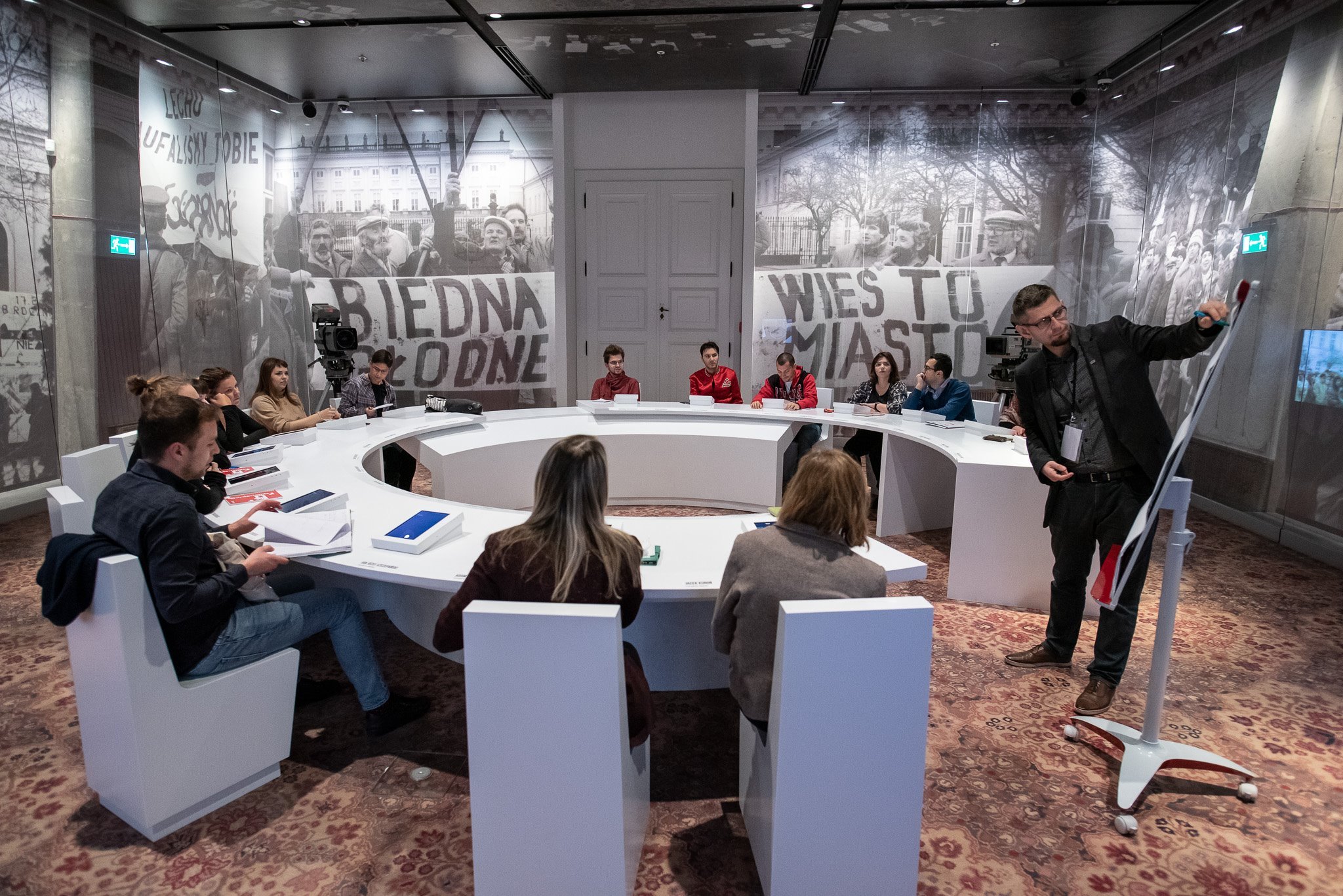Black Artistic and Curatorial Practices in Conversation: Reflecting on Andrea Fatona's “Practice as Ritual/Ritual as Practice”
BY MAHLET CUFF (Research Assistant - Museum Queeries Cluster)
April 8, 2025
The Thinking Through the Museum (TTTM) Annual Gathering, held in Ottawa in October 2024, was an opportunity for academics, students, museum professionals, and community members to come together and exchange knowledge. The gathering, which took place on traditional territory of the Anishinaabe-Algonquin people was my second TTTM gathering. I was very excited to be in a new place and to learn alongside researchers that are thinking critically about who is or isn’t included in our histories, and about the ways in which we can preserve stories. The four-day gathering was filled with talks and panels where I was able to be in conversation with others about individual research practices. In addition to workshops and conversations, we were able to explore Ottawa. The TTTM cohort visited galleries and museums that housed exhibitions that used archival materials, found materials, installations, new media, and collage to preserve oral histories.
Alice Ming Wai Jim brings TTTM members through Practice as Ritual/ Ritual as Practice at the CUAG. Photo by: Keisha Cuffie.
The exhibition that resonated with me was at the Carleton University Art Gallery (CUAG) titled Practice as Ritual/ Ritual as Practice, curated by TTTM Collaborator Dr. Andrea Fatona. This exhibit brings attention to the preservation of histories of Black artistic and curatorial practices in Canada and inspires me to look further at how Black Prairie artists, specifically, have made an impact on Canadian contemporary art. Over the last thirty-five years, Fatona and others have carved out space for emerging Black artists, writers and curators like me to understand the historical significance of Black Canadian curatorial practices within contemporary art. In this blog I reflect on Practice as Ritual/ Ritual as Practice in the context of a gathering of the TTTM research network, with whom I work as a Research Assistant. Witnessing the exhibition through the lens of TTTM offered me a new perspective on how these works are in conversation with one another.
Art historian and TTTM Collaborator Dr. Alice Ming Wai Jim guided the TTTM group through the exhibition (see here for full tour recording). Jim has deep ties to the curator and the artists involved in the exhibition. She described Practice as the manifestation of thirty-five years of consistent attention to the Black women artists included in the exhibition, with roots in a 1989 exhibit organized by the Diasporic African Women’s Art (DAWA) collective called Black Wimmin: When and Where We Enter. Jim observes that Black Wimmin was “the first of its kind in Canada to be curated and feature artwork exclusively by Black women.” As a key researcher in the works of Black women artists of the 1990s and 2000s, Jim provided her interpretations of the pieces in Practice alongside Fatona’s curatorial voice.
This exhibition features the work of Khadejha McCall, whose untitled piece is held up high on two canvases that are layered but with repetitive images. They create a striking composition that draws the viewer to look closely for hidden messages within the large screenprinted piece. The messages that appear on McCalls’s work read “Are you unhappy with your marriage or separated from your loved ones?” These words, repeated throughout the piece, create a meditative, almost ritualistic rhythm. For me, McCall’s work serves as an invitation for Black and African Diasporic individuals to reflect on shared histories, find solace in collective experiences, and reconnect with personal and cultural memories. The work offers a sense of freedom, inviting viewers to embrace their own histories on their own terms.
Barbara Prézeau Stephenson’s Braids (2020-2022) at the Carleton University Art Gallery. Photo by: Mahlet Cuff.
The colorful and bright images in Barbara Prézeau Stephenson’s Braids transported me to my own childhood memories of my mother braiding my hair. From the age of five, I watched her experiment with different styles, using braiding as a form of creative expression. For Black women, femmes, and gender-diverse people, braiding is not only an intimate act but also a means of expressing identity and connecting with community. To see braids—often undervalued or overlooked—displayed so beautifully in a gallery setting felt like a powerful reclaiming of that tradition.
For the tour, I brought along Yaniya Lee’s book Selected Writing on Black Canadian Art, (which includes Jim’s pivotal work “Articulating Spaces of Representation: Contemporary Black Women Artists in Canada”) in which each author discusses the impact of the exhibition Black Wimmin: When and Where We Enter. In Jim’s text she describes Black Wimmin: When and Where We Enter as “an exhibition that presented itself as a challenge to dominant, traditional Eurocentric politics of aesthetics and representation and its various undercurrents existing in the Canadian art arena, which in the denial of difference in the name of multiculturalist liberalism, habitually ignored the contributions of artists of colour.” This 2004 text is a jumping point for Black women artists and writers to feel validated in their experience of navigating the exclusionary ways that the Canadian art landscape treats Black women artists. Practice as Ritual/ Ritual as Practice is a further iteration of the curatorial work Fatona has been doing and paves the way for writers and critics such as Lee to write about Black women’s art in Canada. Lee's book is of interest to me as an emerging curator and arts critic because it collectively talks about the experiences of Black artists; their experiences of making, building their arts practice, and navigating the arts world as a Black person in so called Canada. The conversations that Lee is having within these pages, gave me a sense of relief and relatability because I feel less alone and understood as a Black artist, emerging curator, and arts critic.
Yaniya Lee’s Selected Writing on Black Canadian Art.
I did not fully realize until the day of the tour that there would be so much overlap between Practice and Lee’s book. Strikingly, Lee herself is included in the exhibition as a small child portrayed in Transition (2022) by DZI.AN, one example that illustrates the influence of these earlier works in curatorial practice today.
To have this experience at the TTTM gathering offered insight to the ways which in Black Canadian curatorial practices have left an imprint within arts institutions and museums. Witnessing Practice as Ritual/ Ritual as Practice makes me wonder what an exhibition of all Manitoban Black women artists in 30 years would look like. Who would be considered mentors, elders, curators, storytellers, knowledge keepers? I ask these questions because if these questions are not proposed there is a chance these voices will be erased from the Manitoba art canon. I might never see this exhibition in person, or in Winnipeg at least, because there is a gap in Black curatorial voices in the arts, museums, and archival realm in Manitoba. But this only inspires me further to look at the past to see how it has influenced the future ways of art making by Black women artists in Canada.
Works Cited
Practice as Ritual / Ritual as Practice. 14 September.-December 29.2024. Carleton University Art Gallery, Ottawa.
Lee, Yaniya, “The Women Running the Show” Selected Writing on Black Canadian Art. Art Metropole, 2024, pp. 41.
Jim Wai Ming Alice, Making an Entrance: Black Wimmin, When and Where We Enter." Canadian Art, 4 Dec. 2019, https://canadianart.ca/essays/making-an-entrance-black-wimmin-when-and-where-we-enter/.
Prézeau Stephenson, Barbara, in collaboration with photographer Radu Juster. "Braids." 2020-2022, video stills. Photos by Guy L'Heureux, courtesy of articule, 2023.
McCall, Khadejha, “Untitled.” 2000




















